7 Houseplants That Will Survive Winter, According to Experts
Plant pros say these houseplants require less sunlight and aren't as affected by dry air.
Summertime brings long, sunny days and natural humidity—things that houseplants love. Therefore, you might notice that some members of your indoor garden begin to stagnate in their growth or even start to droop or die once the clocks go back. Luckily, certain plants fare just as well regardless of the time of year. Some simply need less sunlight and aren't as bothered by your heater. Keep reading to hear from plant experts about which houseplants will survive winter.
READ THIS NEXT: 5 House Plants That Don't Need Sunlight.
1
ZZ Plant

Don't be surprised if your ZZ plant starts less than a foot tall and grows into the size of a miniature tree with the proper care.
"The ZZ plant is characterized by its thick, waxy leaves which help it become tolerable to drier conditions (reduces the rate of transpiration) in the home during the winter months when the heat kicks on," explains Paris Lalicata, plant education and community associate at The Sill. This is also why it's considered a drought-tolerant plant, and therefore, is a great choice for someone who travels often.
You can even keep your ZZ plant near a drafty window since it can withstand temperatures as low as 40 degrees, says Lalicata. "They also tolerate varying light conditions, including the lower light levels and shorter daylight hours we experience in the winter," she adds.
2
Snake Plant
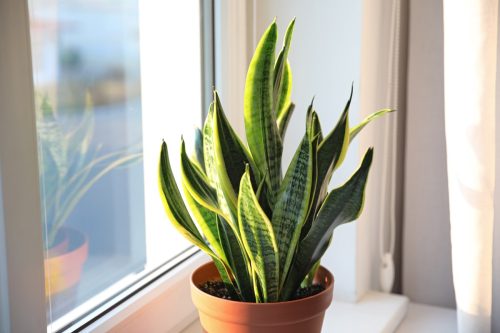
"The snake plant is my go-to recommendation for those looking for a winter-friendly houseplant," shares Lindsay Pangborn, the gardening expert for Bloomscape. "In addition to its low-maintenance care needs, this plant actually prefers to be placed in areas that have dry, hot air, such as heaters or furnaces. Its ability to survive with little moisture and withstand various light settings can be traced back to its nativity environment of dry climates."
As Lalicata notes, the snake plant is another option for chilly rooms, as it can tolerate temperatures as low as 55 degrees.
READ THIS NEXT: These Plants Are the Hardest to Kill, According to Experts.
3
Pothos

"This plant is one of the most popular types of houseplants, and for good reason: They're fast-growing, hardy, and easy to care for," says Lalicata. They also come in several different colors and varieties, all of which are characterized by their romantic, trailing vines and heart-shaped leaves.
But in addition to their attractiveness, "Pothos plants thrive in bright, indirect light, but they can tolerate medium to low indirect light, for instance, in north-facing homes or during cooler seasons with shorter days," Lalicat says. And Pangborn notes that you can place a pothos "along a windowsill that could experience the window's wind chills or heater's dry air."
4
Dracaena
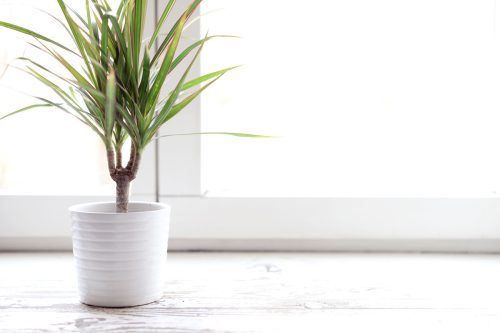
Dracaena is another houseplant that comes in many different shapes and sizes. Pangborn is partial to the Dracaena Golden Heart. "It's endemic to a warmer climate, but its ability to withstand chillier temperatures, low-light settings, and dry air also makes it a winter-friendly plant," she explains.
Lalicata also calls out the Dracaena Warneckii, a tall and slender variety that can survive in low-light conditions. "Dracaena are not only tolerable of infrequent waterings but can also remain happy in low humidity without fuss." She notes that this houseplant can withstand temperatures as low as 50 degrees.
READ THIS NEXT: 5 Flowers That Can Thrive in the Winter, Experts Say.
5
Ponytail Palm
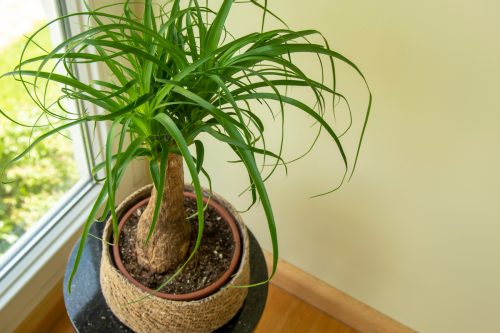
The wispy, ponytail-like leaves of this houseplant might make a fun toy for your pet, but it has many cold-weather benefits, too. Despite its name, this plant is actually a succulent, so it prefers dry soil and won't suffer when the heater kicks on. Plus, "its thick trunk helps it retain moisture making it drought tolerant," explains Lalicata.
Ponytail palms technically do best in bright light, but "they can tolerate medium-low light areas in the home or when light levels decrease in the winter," she adds.
6
Succulents
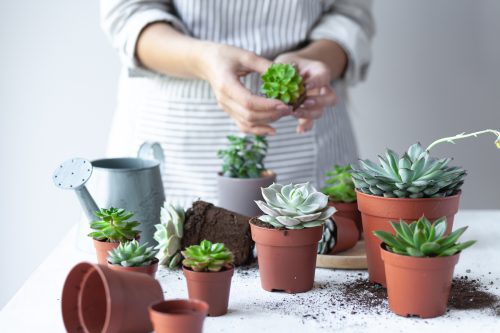
Speaking of succulents, this is a plant species that's generally great for the winter. "Succulents have thick leaves that help them conserve moisture and survive in dry conditions, making them well-suited for indoor life during cold weather," says Jen Stark, founder of the blog Happy DIY Home. "They can also tolerate some direct sunshine but don't need as much light as other plants do."
Pangborn says one of her favorite succulents is the Jade plant, with "its plump, circular leaves."
For more plant care advice delivered straight to your inbox, sign up for our daily newsletter.
7
Christmas Cactus
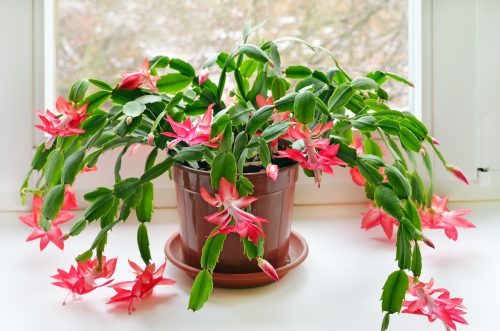
The name alone signals that this plant is great for the winter. In fact, it's so named because it blooms around the holidays with vibrant pink/red flowers, according to Stark. "These plants are very easy to care for indoors and don't require much sunlight or water, making them ideal companions during the winter months," she shares.
In an interview with Better Homes & Gardens, Alfred Palomares, resident plant dad for 1-800-Flowers.com, explains that "once flowering stops in January, a twice-monthly watering schedule is recommended throughout the rest of the winter to avoid overwatering." The article also notes that Christmas cacti prefer cooler temperatures and do best when it's 60 to 70 degrees.






















